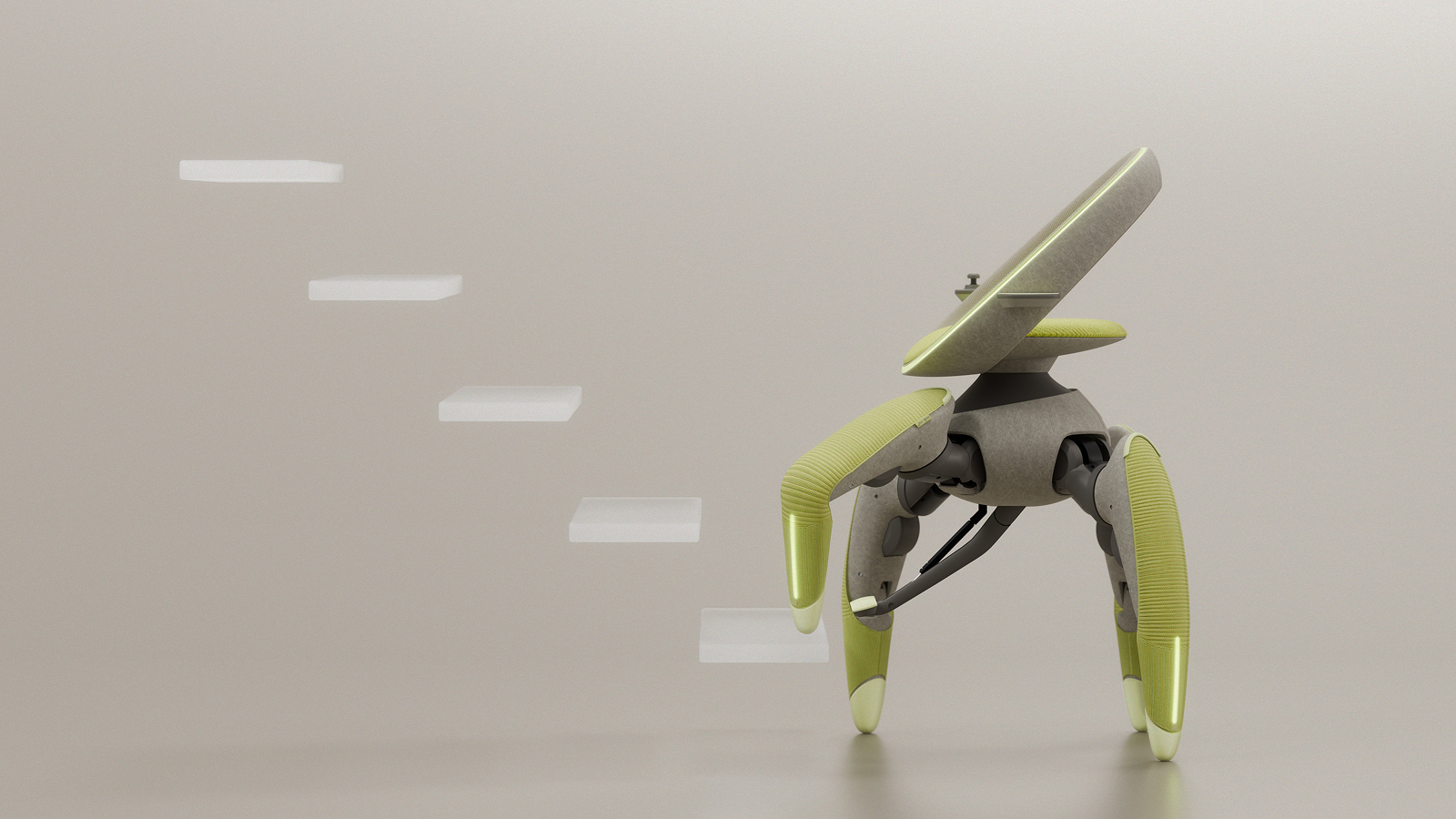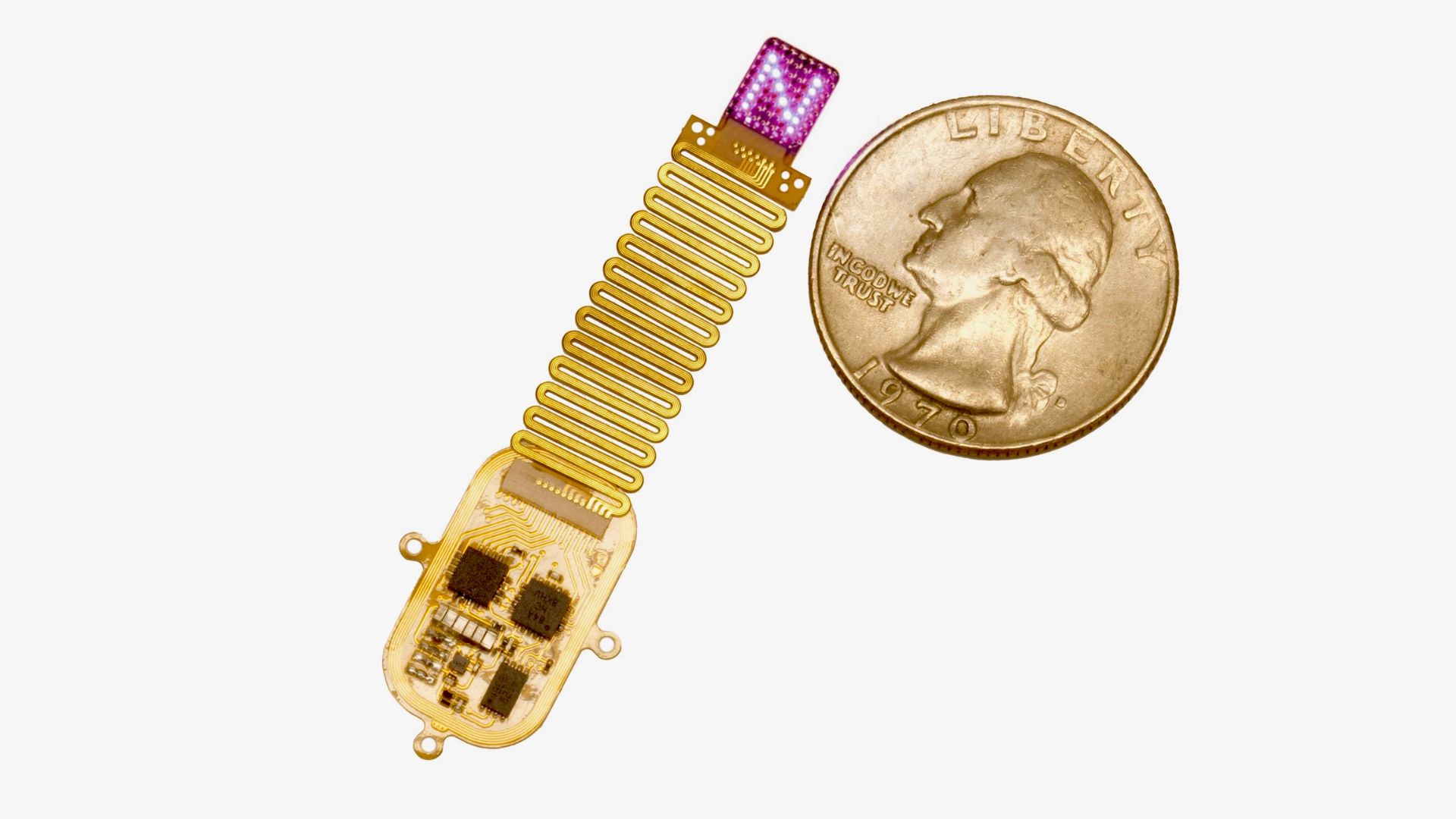Bizarre robotic chair concept looks like a crab and can carry you around the house — it can even help you into your car
The compact robot enables people with limited mobility to navigate complicated environments where wheeled devices can't go.

A robot chair revealed at the Japan Mobility Show 2025 can navigate complicated environments on its four articulated legs.
While the chair is still a prototype, it aims to allow users with limited mobility to climb stairs or cross other obstacles that would be impassable by traditional wheelchairs. It's also capable of lifting the user so they can access cars and other elevated vehicles or platforms.
Developed by Toyota, the Walk Me prototype features four foldable legs and a seat designed to support proper posture. The legs are swaddled in a soft, colorful material that serves the dual purpose of protecting the sensitive internals (like sensors and motors) from external damage, while also giving the unit a pleasant, approachable aesthetic.

The legs are wholly independent, with each bending, lifting or folding to aid manoeuvrability. When not in use, the legs can also fold away neatly beneath the robot, allowing it to be packed into a car or luggage for easy transport. The system can also unfold and stabilize itself without user assistance.
Described as an "autonomous wheelchair," the bot is packed with a number of features that allow it to navigate difficult terrain by mimicking the movement of four-legged animals like crabs. These include LiDAR systems that use laser light to measure distances and create highly accurate, detailed three-dimensional representations of objects and environments, which the robot utilizes to dodge obstacles or deal with uneven surfaces.
When climbing stairs, the unit first tests the height with its front legs before pushing upward with its rear limbs. There are also built-in collision radars to avoid contact with people or objects.
Additionally, the Walk Me has built-in weight sensors to ensure that the user remains in a stable, seated position. Toyota's engineers studied the way people naturally navigate stairs and how they distribute their weight when moving around or over obstacles. If the robot senses an imbalance, it can adjust both its legs as well as the tilt of the seat itself to ensure the user is comfortable and secure.
Get the world’s most fascinating discoveries delivered straight to your inbox.
There are also a number of manual control options. Handles are attached to the seat that allow the user to guide the robot's direction. Alternatively, a digital interface provides specific buttons to control locomotion precisely. The Walk Me will also respond to voice commands that include preset destinations like "living room" and speed controls like "slower" or "faster."
The unit is powered by a battery concealed behind the seat, which can power it for an entire day of operation. The battery is charged by plugging it into a standard wall outlet overnight.
The Walk Me was part of a broader product lineup shown by Toyota at the Tokyo Mobility Show, which also included an autonomous, self-driving car for kids and a "Land Cruiser of wheelchairs" with extra-rugged, all-terrain tires and a durable frame. According to Top Gear, the wheelchair was inspired by Toyota's chairman Akio Toyoda who, at 69, wants to be able to "drift, do donuts and race off-road into his retirement."

Alan is a freelance tech and entertainment journalist who specializes in computers, laptops, and video games. He's previously written for sites like PC Gamer, GamesRadar, and Rolling Stone. If you need advice on tech, or help finding the best tech deals, Alan is your man.
You must confirm your public display name before commenting
Please logout and then login again, you will then be prompted to enter your display name.


